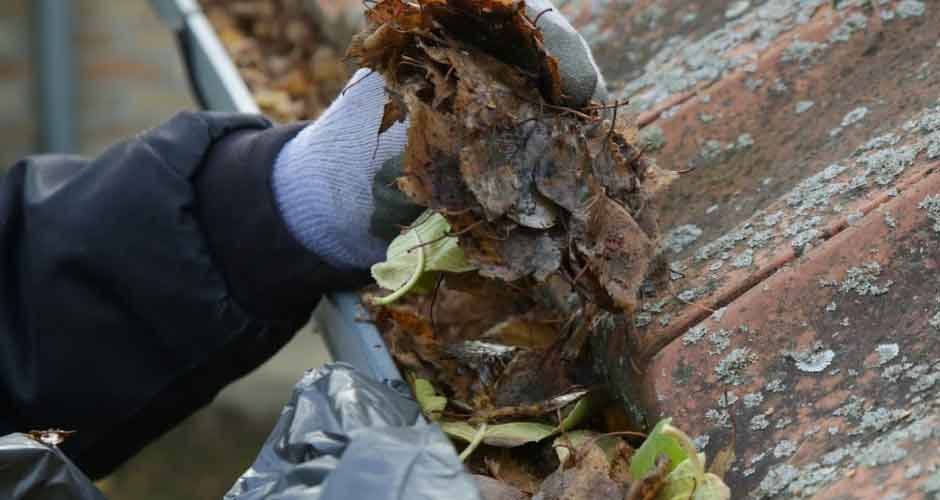Heavy rainfall has become more common and intense over the past few decades. Rainwater can get into homes through cracks, gaps, and low-lying areas. Poor drainage or foundation cracks can cause water to seep into your home.
Commercial storm damage is also a significant concern, as storms can cause flooding in both homes and businesses. If your gutters are full of leaves or other debris, rainwater may run down the sides of your property, soaking the soil near the foundation. Clogged drains or broken drainage pipes can cause water to build up and cause flooding.
Meanwhile, are you aware that bad landscaping and grading can lead to flooding inside your home? Rainwater will flow toward the base of your home if the surrounding land slopes toward it. So, if your property lacks swales or berms, water can pool around your home and worsen flooding.
A study found improper grading and landscaping were the primary causes of flood damage to homes. Nelson Management experts warn flooding can cause significant damage to property and emotional stress. Hence, creating reliable flood-prevention methods is crucial.
Many homeowners turn to waterproofing experts to protect their homes. Each property has unique waterproofing requirements. A skilled professional that specialises in water damage will customise their approach accordingly.
A water damage specialist will consider various factors, including the property’s location, soil conditions, and potential sources of water intrusion. Evaluating these aspects can help them create a plan that safeguards your property.
Implementing proactive measures can reduce flood devastation and protect your health and property. Here’s how:
- Improve Drainage Systems
Improving your home’s drainage systems is essential for flood prevention. Directing rainwater away from your property can minimise flooding and foundation issues. Clearing and maintaining your gutters and downspouts is critical in improving your home’s drainage system.
Consider these tips:
- Regularly clean and maintain gutters and downspouts to ensure proper water flow and prevent blockages.
- Direct water at least six feet away from your home’s foundation by extending downspouts.
- Securely fasten your gutters to your roofline and check for leaks or damage.
Rainwater can flow freely through your gutters and downspouts if functioning correctly, preventing water overflow and reducing the risk of water infiltration.
- Install French Drains
French drains can effectively divert water from your property, particularly in regions prone to heavy rainfall. Here are some practical suggestions before installing French drains:
- Identify areas near your home where water tends to collect or pool.
- Dig a trench to prevent soil from clogging the drain.
- Install perforated pipes and cover them with gravel.
- Direct the tube toward an appropriate outlet, such as a drainage ditch or a storm drain.
French drains function as subterranean channels. They collect excess water and direct it away from your property, protecting the foundation and preventing flooding.

- Implement Surface Drainage Solutions
Surface drainage solutions help you deal with water that runs off the surfaces of your property. Here’s how to implement these solutions:
- Dig shallow ditches or swales along the edges of your property to keep water away from your house.
- Build berms or other raised areas to change the way water flows.
- Use paving materials that let water through, like porous concrete or gravel, to let water get into the ground.
Putting surface drainage solutions can stop water from pooling near your foundation and prevent water damage to your property.
- Consider A Sump Pump System
A sump pump system is beneficial in places where basements experience flood often. Here are some factors you should consider before installing one:
- Find the lowest point in your basement or crawl space where water tends to gather.
- Put a sump pit and a submersible sump pump in that area.
- Attach the sump pump to a pipe that sends water away from your home’s foundation.
A sump pump system keeps water from getting into your basement, reducing the risk of damage and mould growth.
- Add Barriers And Sealing Systems
Physical barriers and sealing systems can provide additional protection against flooding. You can assess the following techniques:
- Install flood-resistant doors, window shields, and barriers to prevent water intrusion.
- Apply waterproof sealants to vulnerable entry points such as cracks, gaps, and windows.
- Install backflow prevention devices to prevent sewage backup during floods.
Flood-resistant doors and window shields create a watertight barrier, preventing water from entering your home. Waterproof sealants applied to cracks and gaps provide extra protection against water infiltration.
- Elevate Critical Systems And Belongings
Elevating critical systems and valuable possessions can help protect them from flooding. You can put electrical panels, HVAC systems, and appliances above flood zones. In addition, keep documents, photographs, and other valuables in waterproof containers or on higher floors. These tips can prevent damage and allow for faster recovery after a flood event.
- Create Flood-Resistant Landscapes
You can minimise flood damage by using strategic landscaping practices. You can follow these steps:
- In outdoor areas, use water-permeable materials to allow water to seep into the ground.
- Grow native plants with deep root systems to improve soil absorption and reduce erosion.
- Construct retention ponds to divert and hold water away from your home.
Water-permeable materials for driveways and walkways allow rainwater to percolate into the ground rather than pooling on the surface.
Conclusion
People often lose personal items, spend money to fix things, and have trouble going about their daily lives after a flood. Meanwhile, mould and mildew grow well in damp places, affecting your health.
Implementing prevention techniques is crucial for property damage mitigation and home protection. You can improve your drainage systems, install barriers, and create flood-resistant landscapes to reduce the risk of flooding and its devastating consequences. Investing in water damage prevention ensures a safer, more resilient future for your home and loved ones.






